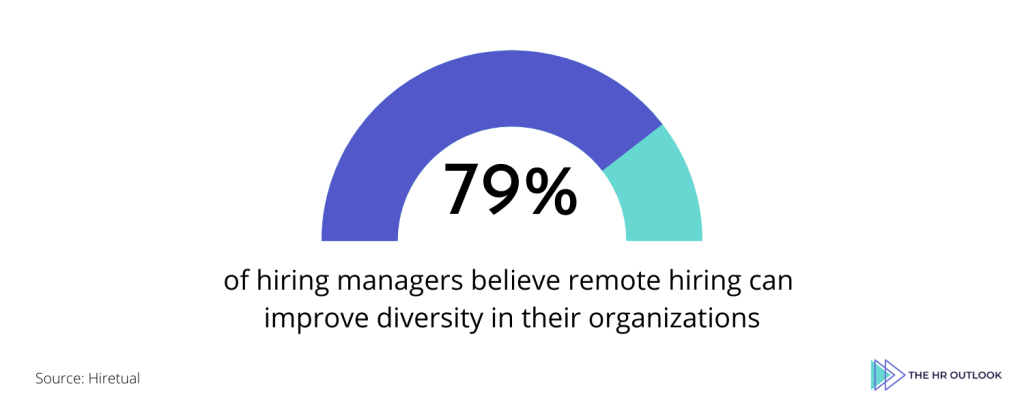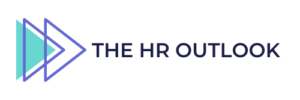In order to create a future-proof workforce strategy that helps your company thrive, it’s important to stay up-to-date on the latest trends. In this post, we’ve compiled 50+ HR & Recruiting stats for 2022. These statistics will help you plan ahead and make informed decisions as you set out on the path of leadership in the workplace.
This post features hand-picked stats about:
- Hiring
- HR Technology
- HR Challenges
- HR Tools
- Diversity and Inclusion
- Employee Experience
- Employer Branding
- Communication Related
- Social Media Related
- Covid-19 Related
- Future of Work
HIRING
- 66% of hiring managers say hiring is harder in 2021 than in 2020 (Criteria)
- Hiring managers in the United States predict that their HR budgets will rise by 6.9 percent in 2022 (Criteria)
- 59% of companies plan to spend more on “finding qualified candidates,” an increase of 49% from 2020. Similarly, 53% of organizations plan to increase spending on “getting enough applicants,” up 71% from last year (Criteria)
- On average, hiring professionals anticipate a 5.1 percent increase in hiring volume in 2022, indicating that the talent shortage is far from over (Criteria)
- Recruiters expect to spend more time sourcing candidates in 2021 than they did in the second half of 2020 (Hireez)
- 49% of white-collar recruiters intend to hire to fill job openings (Monster)
- Globally, 59% of employers are primarily interested in a resume that demonstrates a candidate’s abilities (Monster)
- In the United States, only 11% of employers consider cover letters to be a valuable resource (Monster)
- Job boards are the most commonly used source of applicants, accounting for an average of 82% of applications across all industries (CareerPlug)
- While job boards generate 76% of applicants, they generate only 38% of hires (CareerPlug)
- Over the last year, 24% of job seekers have participated in more than 5 interviews (Jobvite)
- The majority of workers (53%) apply for jobs even if they lack all the required skills as per the job description (Jobvite)

HR TECHNOLOGY
- Only 13% of hiring managers intend to incorporate more AI-driven hiring into their processes; 44% are still undecided, and 43% simply has no such intentions (Criteria)
- 75% of candidates successfully complete the job application process. 25% lose interest due to a complicated procedure or an application that is too lengthy (Turbo Hire)
- The lengthy application process turned off 42% of applicants (Turbo Hire)
- 36% of workers have been unable to participate in a video interview at some point due to a lack of adequate technology or Wi-Fi (Jobvite)
HR CHALLENGES
- 56% of hiring professionals report receiving fewer job applicants than in 2020, while 30% report receiving the same volume, and only 14 percent report receiving more (Criteria)
- The number of hiring managers who are struggling to find qualified job candidates has increased 19% since 2020, while the number of those who aren’t getting enough applicants has increased by a whopping 51% (Criteria)
- The top two barriers to hiring more remote employees are: a company’s belief that in-person workers are more effective (38%) and hiring managers’ preference for local candidates (36%) (Talview)
- Employer competition, according to 50% of recruiters, is the most anticipated recruitment challenge for 2021 (Hireez)
- Recruiters’ top three anticipated challenges are 1. Finding candidates with the right skills 39% 2. Work-life balance expectations 26%. 3. Virtual recruiting (26%) (Monster)
- The most challenging parts of the recruiting process chosen were: 1. Assessing candidates in the interview 41% 2. Identifying quality candidates quickly 40% 3. Effectively screening candidates pre-interview 36% 4. Getting a response from and engaging with candidates 31% (Monster)
- 66% of employers say candidates overstate their skills on resumes (Monster)

HR TOOLS
- In comparison to 2019, 29 percent more hiring managers reported using an ATS or HRIS to hire (Criteria)
- 93% of organizations use a general video tool for video interviews rather than a video interviewing tool (Criteria)
- 97% of recruiters use their ATS/CRM to source talent internally (Hireez)
- According to 29% of employees, their employer does not provide a platform/software that allows employees to easily apply for open internal roles (Jobvite)
DIVERSITY AND INCLUSION
- To attract a more diverse applicant pool, 53% of companies are writing more inclusive job descriptions. 39% provide diversity training for hiring managers, 35% form diverse hiring teams, 25% establish DE&I teams, and 21% use some form of blind hiring (Criteria)
- 79% of hiring managers believe remote hiring can improve diversity in their organizations (Talview)

- During interviews, 49% of candidates inquired about the company’s diversity goals and initiatives (Jobvite)
- Employers should share their diversity hiring goals on social media, blogs, and career sites, say 53% of workers. But a significant minority (29%) disagrees (Jobvite)
- 42% of workers would decline a job offer if the employer lacked diversity in its workforce or lacked clear goals for improving diversity in hiring (Jobvite)
EMPLOYEE EXPERIENCE
- 58% of job seekers reported declining a job offer as a result of bad hiring experience with a potential employer. This is an increase from 50% in 2020 (CareerPlug)
- 67% of job seekers report having had at least one negative hiring experience in the last 12 months (CareerPlug)
EMPLOYER BRANDING
- Globally, 72% of recruiting leaders agree that employer branding influences hiring (LinkedIn)
COMMUNICATION RELATED
- Almost 40 percent of job seekers expect compensation information to be included in the job posting (CareerPlug)
- A whopping 88% of Fortune 500 companies do not clearly list expired positions on their career websites (Phenom)
- Phone and email remain the most effective communication tools for recruiting, chosen by 71% and 62% of global recruiters, respectively (Monster)
- Workers with children (63%) prefer to schedule job interviews via text (Jobvite)
- Recruiters texted 51% of candidates to schedule an interview. 69 percent preferred this method over email or phone calls (Jobvite)
SOCIAL MEDIA RELATED
- 49% of Fortune 500 companies use only one social media platform to attract talent (Phenom)
- Only 1 out of 10 recruiters plan to use LinkedIn as a primary recruitment channel (Hireez)

- 82 percent of workers are likely to click on a job opportunity posted on social media by a member of their network (Jobvite)
- 71% of employees are likely to share job openings at their companies on social media (Jobvite)
COVID-19 RELATED
- 53% of job seekers indicated that they are more concerned with the hiring process experience now than they were prior to the COVID-19 pandemic (CareerPlug)
- Since COVID-19, 71% of companies have changed their remote work policies. Currently, 16% of organizations work mostly remotely, 44% use a hybrid model, and 40% still work mostly in person (Criteria)
- 64% of job seekers say the job-hunting process is more stressful now than it was before the pandemic, with 30% saying it’s much more stressful (Jobvite)
- Since the outbreak of the pandemic, 25% of workers have changed industries (Jobvite)
- Despite the pandemic, Americans’ attitudes toward their jobs are unchanged. While 67% of workers are happy with their jobs, 50% are open to new opportunities (Jobvite)
- 58% of candidates would decline a job offer if the employer lacked clear COVID-19 policies (Jobvite)
- 55% of workers have or would decline a job offer if the employer did not require employees to wear masks at work (Jobvite)
FUTURE OF WORK
- While 44% of companies have adopted a hybrid work model, organizations are still learning how to maximize its benefits. 69% of companies who now operate in a hybrid work model cite employee engagement as a challenge, while the majority cite company culture, collaboration, onboarding, and training as additional challenges (Criteria)
- 80% of companies reported that their interviewing and hiring processes are now entirely remote (Talview)
- 70% of businesses report that at least half of their recruiting and onboarding processes are virtual (Monster)
- Demand for technical professionals has increased by 16%, building on the 4% growth seen in June’21 (Naukri)
Conclusion
Now that you know what the future of HR looks like, it’s time to start making changes. It doesn’t take a genius to see where trends are headed – make sure your company is ready for 2022!
What are your thoughts?
Do any of these statistics surprise you or match up with what’s happening in your company right now?
Let us know by commenting below!




Pingback: 10+ Actionable Tips To Improve Your Candidate Experience in 2022 - Recruiterflow Blog
Pingback: 8 Easy Ways to Improve Candidate Experience in Your Workplace - Apollo Technical LLC
Pingback: How To Write a Career Change Resume? - Margaret Buj - Interview Coach - No.1 Executive Resume Writer in India
Pingback: How To Write a Career Change Resume? - Margaret Buj - Interview Coach
Pingback: 7 Tips for Conducting Remote Worker Performance Reviews – Search Remotely
Pingback: How To Write a Career Change Resume? - Margaret Buj - Interview Coach
Pingback: How to Write a Job Description [2023 Update] - The HR Outlook
Pingback: Lateral Hiring: The Ultimate Hiring Manager's Handbook